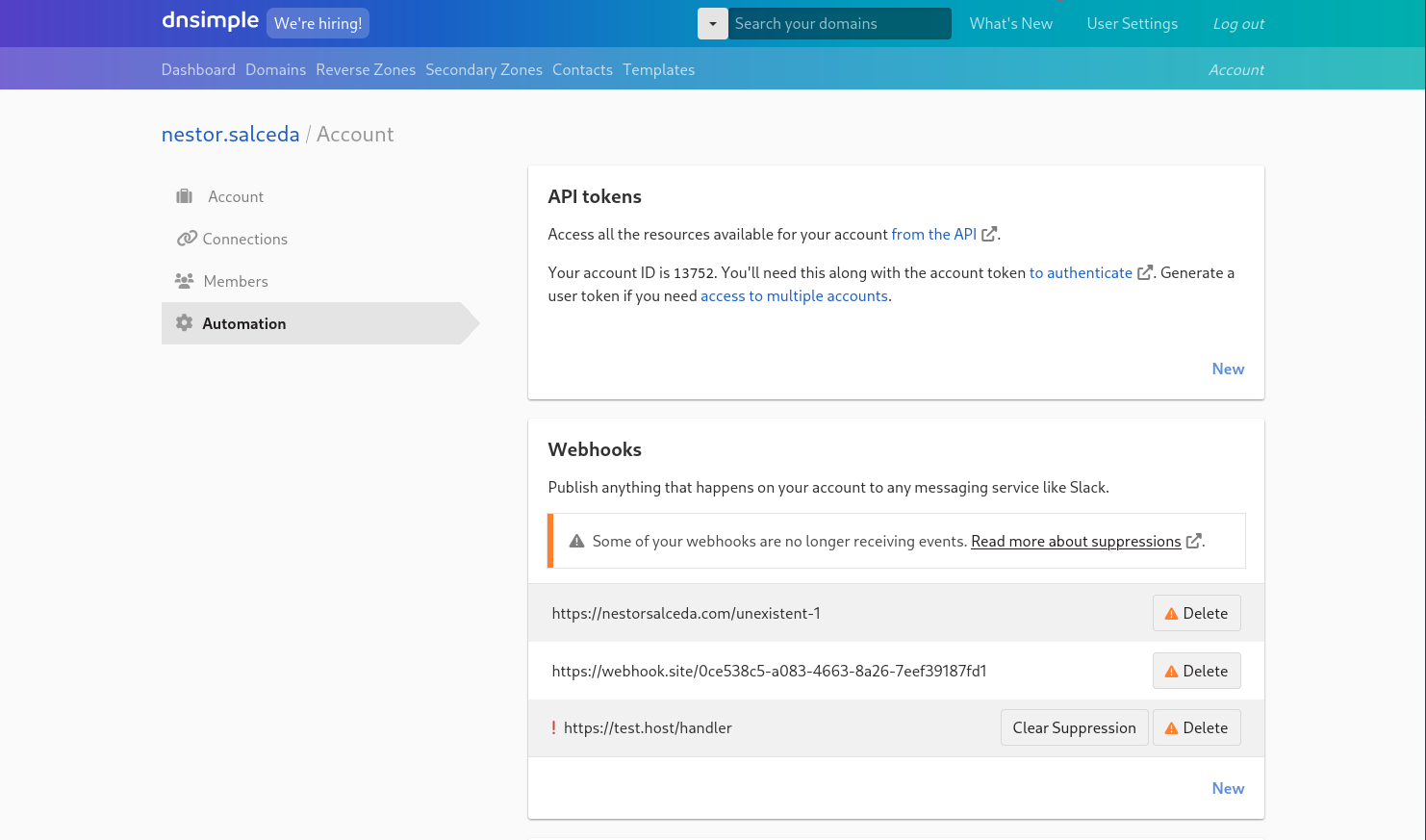Webhook Suppression Management
At DNSimple, offering a powerful API for domain management is at the core of what we do. We currently support and maintain 9 official clients for a variety of programming languages. Back in 2016, we announced the developer release of another major addition to our API toolkit: DNSimple webhooks. With webhooks you can react to events like domain registrations, transfers, renewals, automatic renewals, zone changes, and a whole lot more.
In an effort to continually improve our API, we're releasing a new functionality: Clear Webhook Suppression.
Why is this important?
Sometimes a webhook delivery fails. This can be temporary, like when the network between our servers and the webhook endpoint is unavailable, or more permanent, like the webhook endpoint server being turned off completely.
To ensure reliability and efficiency in our webhook publishing, we used an exponential backoff algorithm, which allows us to retry failed deliveries. If a message can't be delivered, we retry it several times with additional delays between each retry. This gives the recipient an opportunity to receive the event successfully. If a message still can't be delivered, we mark the webhook endpoint as "suppressed" and stop sending events to the endpoint in question.
Some of our customers had issues with this because they couldn't troubleshoot why they stopped receiving events, and they didn't have a way to check if an endpoint was suppressed. With this new feature, you'll be able to manage the suppressed webhooks yourself, checking its state and clearing the suppression so you can receive events again without recreating the endpoint.
How does it work?
In your DNSimple account, you'll find a tab called "Automation" on the left-hand side of your dashboard. Under this "Automation" tab is a "Webhooks" section. This is where messages are displayed in the event of a webhook suppression.

A red exclamation point next to a webhook indicates there's an issue and that the webhook is suppressed. The option to clear the suppression is also available here.
With this new feature you'll have more visibility into the status of your webhooks, and can remove any suppressions once you've addressed the source of the suppression. So start implementing your own webhook handlers now.
To learn more about our webhooks, and get more details for the clear suppression mechanism, take a look at our support documentation. If you have any questions about our webhooks, or anything else about DNSimple, get in touch - we're always here to help. Not using DNSimple yet? Give us a try, free for 30 days.
Néstor Salceda
Software engineer and open source lover.
We think domain management should be easy.
That's why we continue building DNSimple.

